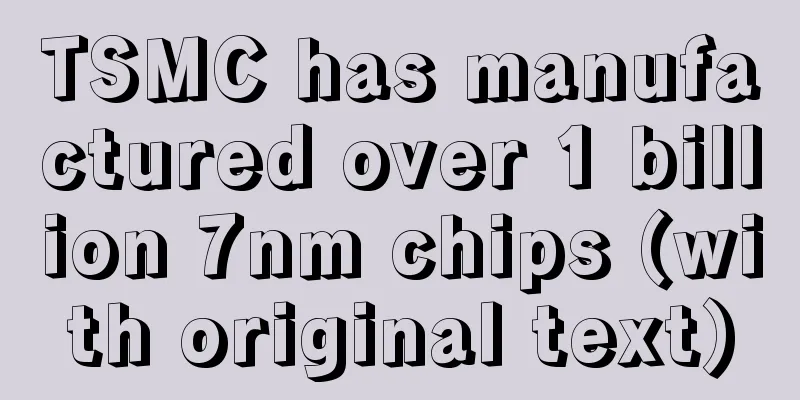Analysis of Apple iPhone Industry Chain (Part 1)

|
As the most successful technology company in the world, Apple has led the development of the smartphone industry with its strong innovative genes and excellent supply chain management. It can be said that the influence of the iPhone has long surpassed the product itself and has become the standard for industry development and the future trend of the industry. iPhone has a huge impact on 3C manufacturing industrySmartphones are an important part of the 3C industry, and their scale and growth dominate the industry. As the pioneer of smartphones, the iPhone has a huge influence on the upstream 3C manufacturing industry. The influence of iPhone on 3C manufacturing industry is mainly reflected in two aspects: 1) As the world's most profitable mobile phone, iPhone brings a large number of equipment orders to the upstream 3C manufacturing industry. According to IDC data, the ASP (Average Selling Price) of iPhone phones in Q4 2017 reached US$618, more than double the global average ASP of smartphones. In terms of gross profit margin, Apple achieved a gross profit margin of 30% in 2016, far higher than the industry average. At present, Apple's mobile phones account for 95% of the profits of the global smartphone industry with a market share of 17.2%. It can be seen that the strong profitability of iPhone ensures that the number of orders from upstream equipment companies remains at a high level. 2) The iPhone product update cycle is short, and new technologies and processes have spawned a large number of equipment update needs. According to historical data, the product iteration cycle of the iPhone is one year, and a large number of new technology and process breakthroughs are generated during the product update process. For example, Apple was the first to apply high-definition cameras, metal bodies, fingerprint recognition and other technologies to smartphones. New technologies and processes have driven the rapid popularization of upstream CNC machine tools, flat display modules, SMT production lines and other mechanical equipment. 3C manufacturing industry enters the era of stock competition, and automation penetration rate is expected to continue to increase3C products are a general term for computers, communications, and consumer electronics. Traditional 3C products include computers, tablet computers, mobile phones, digital cameras, televisions, audio and video playback devices and other hardware; emerging 3C products include smart wearable devices, VR/AR device terminals, consumer drones, entertainment robots, etc. The domestic 3C manufacturing industry is large but not strong. Automation equipment helps the industry transform and upgrade The huge market space of the 3C industry has driven the prosperity of the upstream manufacturing industry. In the past few years, with its vast consumer market, mature manufacturing capabilities and cheap production factors, China has become the world's consumer electronics manufacturing center. Although my country's 3C production capacity ranks first in the world, it is mainly concentrated in the middle and lower reaches of the industrial chain, mainly based on OEM assembly, with low added value. According to our calculations, the gross profit margin of my country's 3C manufacturing industry is around 10%, and the net profit margin is less than 5%. The middle and high-end links of the 3C industry chain are basically monopolized by international giants, and core components such as chips, sensors, CPUs, and large-capacity storage chips mainly rely on foreign imports. The domestic 3C manufacturing industry is still in the labor-intensive production, manufacturing, processing and assembly links, and cost management capabilities have become the core competitiveness of enterprises. iPhone related industry chain3D glass has emerged as a new force, driving the prosperity of the glass industry chain Currently, the popular mobile phone back cover materials on the market are aluminum alloy, stainless steel, plastic, glass, and ceramic. Metal materials have become the choice of many mobile phone manufacturers due to their good texture and wear resistance. However, the metal body is very closed and has a large shielding effect on the signal. This defect seriously restricts the application of wireless charging technology and 5G communication in smartphones. The glass back cover has outstanding advantages such as exquisite visual experience, good signal reception ability, and outstanding light transmission performance. It is expected to become the first choice of body material in the future. In 2017, Apple invested $200 million in Corning, a global glass manufacturing giant, to support Corning's research and development, equipment needs, and advanced glass manufacturing processes. Flexible OLED technology matures, 3D glass emerges As the outermost protective layer of the mobile phone screen, cover glass is an indispensable component of the mobile phone touch solution. In the early days, 2D glass was widely used on mobile phone screens, represented by the iPhone 4; later, in order to improve the overall visual experience of the screen and the body, 2.5D curved glass began to be adopted by major mobile phone manufacturers. Apple began to choose 2.5D curved glass from iPhone 6. At present, with the continuous increase in yield rate and the increasing maturity of technology, it has become a general trend for flexible OLED to replace LCD as the mainstream solution for mobile phone screens. With the strong rise of curved screens, the matching 3D glass will become the future development direction of cover glass. At present, models such as Samsung Galaxy S7 Edge and Xiaomi Note2 have begun to adopt the configuration of curved OLED screen + 3D cover glass, and the market response has been enthusiastic. 2D-2.5D-3D is the evolution trend of cover glass, and the shipment of 3D glass is expected to exceed 100 million. 2D glass is the familiar flat glass, and there is no curvature on the surface of the glass. 2.5D glass is based on 2D glass, and the edges of the glass are curved. Holding a 2.5D glass screen can make the surface of the mobile phone look like a water drop that is full but not overflowing, which is more visually appealing, so the 2.5D glass screen is also called a water drop screen. 3D glass adopts a curvature design both in the middle and on the edges of the glass, so that the whole glass has a certain curvature. 3D glass is a major breakthrough in glass manufacturing technology, and it is also the only cover glass that can be used with flexible OLED. As OLED technology matures, it will inevitably drive the penetration rate of 3D glass in the 3C field. According to IHS estimates, the shipment of 3D glass reached 49 million pieces in 2016, and IHS predicts that the shipment will soar to 100 million pieces in 2017. Currently, mainstream manufacturers such as Samsung, LG, Vivo, and Xiaomi have adopted 3D curved glass, which has been popular among consumers. This year, iPhone 8 will also be launched with 3D glass, and 3D glass will usher in a historic opportunity. From the perspective of the 3D glass industry chain, we are optimistic about the investment opportunities of glass engraving machines, hot bending machines and other equipment From the perspective of the industrial chain, the mobile phone cover glass industry can be divided into upstream glass substrates, auxiliary materials, and processing equipment providers, midstream glass cover processing plants, and downstream touch module assembly plants. Glass cover processing plants purchase glass substrates, auxiliary materials, and processing equipment, and perform a series of processing procedures such as cutting and hot bending, and then deliver them to touch module assembly plants to complete the bonding of cover glass and display screens. From the perspective of upstream raw material supply, the upstream glass cover substrate industry has high barriers to entry and high profit margins, and the market is monopolized by several international giants. For example, the gross profit margin of Corning's "Gorilla" glass cover reaches more than 80%. Currently, the best-performing product on the market is high-aluminum glass produced using the overflow process, and only four manufacturers have mastered the core technology. From the perspective of midstream glass processing, the manufacturing process of 2D glass is relatively simple and the technology is the most mature. It mainly includes CNC cutting, CNC engraving, grinding and polishing, strengthening treatment, coating, cleaning, testing and other processes. The main equipment required includes glass engraving machine, glass flat grinder, polishing machine, optical testing equipment, etc.; the process of 2.5D is similar to that of 2D glass, and the edge surface is mainly formed by direct polishing; 3D glass manufacturing adds a hot bending process, and a hot bending machine needs to be introduced to shape the glass surface. At the same time, the glass substrate needs to be repeatedly ground and polished. The process is more complicated and the manufacturing cost is higher. According to our survey data, a 3D glass production line with a capacity of 3kk/month currently requires about 100 hot bending machines, and the total equipment investment of the entire production line is 300-400 million yuan. The market space for glass processing equipment is nearly 8 billion yuan, promoting equipment manufacturers to enter a new boom cycle According to IDC data, global smartphone shipments reached 1.47 billion units in 2016, and smartphone shipments are expected to reach 1.77 billion units by 2020. Different types of glass processing efficiency are different. It is estimated that by 2020, the market penetration rates of 2D, 2.5D, and 3D glass in front covers will be 10%, 50%, and 40%, respectively, and the penetration rates in rear covers will reach 5%, 25%, and 20%, respectively. The average unit price of glass engraving machines is 300,000 yuan/unit, the annual production capacity of 2D glass is 800,000 pieces, and the annual production capacity of 2.5D glass is 500,000 pieces; the average unit price of glass hot bending machines is 1.2 million yuan/unit, and the output is 250,000 pieces/year. By 2020, the market size of glass engraving machines and glass hot bending machines in smartphones will reach 2.642 billion yuan and 5 billion yuan, respectively. The market size of precision engraving machines will reach 2.642 billion yuan in 2020 The market size of hot bending machines is expected to reach 5 billion yuan in 2020 The precision engraving machine has basically achieved localization, and the scale of import substitution of hot bending machines has expanded year by year. At present, the technology of domestic precision engraving machines is relatively mature, and the equipment has basically achieved localization. The mainstream domestic glass precision engraving machine suppliers include Daewoo Precision Engraving, Beijing Precision Engraving, Oride, Genesis, and Ocean Xiangrui. Hot bending machines are important processing equipment used in the 3D glass molding process, and the demand will increase with the increase in 3D glass shipments. Companies in South Korea and Taiwan, China have been deployed earlier, and the main companies include DTK in South Korea and Taiwan's Alliance. In recent years, domestic manufacturers represented by Wisdom Songde and Jinsheng Intelligent have been able to provide high-end hot bending machine solutions after years of hard work, and are gradually expanding the scale of import substitution in the mid-to-high-end market. OLED screen replacement speeds up, leading the trend of equipment manufacturing OLED leads the innovation of next-generation flat panel display technology OLED, or Organic Light-Emitting Diode, is a solid-state device composed of thin sheets of organic molecules. It can emit light after applying electricity. It has excellent characteristics such as no need for backlight, high contrast, thin thickness, wide viewing angle, fast response speed, can be used for flexible panels, wide operating temperature range, simple structure and process. According to the relationship between the driving circuit and the substrate, it can be divided into passive drive (PMOLED) and active drive (AMOLED). Currently, OLED products on the market are mainly AMOLED. The basic structure of OLED includes base layer, anode, organic layer, conductive layer, emission layer and cathode. OLED is a phenomenon that causes light emission through carrier injection and recombination. Its principle is to use ITO transparent electrode and metal electrode as the cathode and anode of the device respectively. Under a certain voltage drive, electrons and holes are injected from the cathode and anode into the electron and hole transport layers respectively. Electrons and holes migrate to the light-emitting layer through the electron and hole transport layers respectively, and meet in the light-emitting layer to form excitons and excite the light-emitting molecules, which emit visible light through radiation. The basic principle of OLED is that the current flows from the cathode to the anode through the organic layer, bringing electrons from the conductive layer to the emission layer; the conductive layer loses electrons to generate holes, which need to be filled with electrons in the emission layer; the holes jump to the emission layer and combine with electrons again. When electrons enter the holes, they release excess energy in the form of light, that is, visible photons are formed. OLED light emitting process diagram OLED manufacturing costs are falling, accelerating the pace of replacing LCD OLED is superior to LCD in performance. TFT-LCD is a flat panel display technology that uses the photoelectric effect of liquid crystals to place liquid crystals between two parallel pieces of glass, and controls the transmittance and reflectivity of the liquid crystal unit through a thin film transistor (TFT) circuit to produce different grayscales. Since the liquid crystal material itself does not emit light, TFT-LCD requires a backlight. OLED is an organic light-emitting diode that can emit light by itself and does not require a backlight. By controlling the current size of the TFT substrate, the brightness of the RGB organic film layer can be controlled to mix the required color. Due to this self-luminous characteristic, OLED has the advantages of being thinner, higher contrast, higher brightness, lower energy consumption, and a wide viewing angle, and the response time is only one thousandth of that of LCD. Since the light-emitting device of AMOLED is a solid-state OLED, its display structure is all solid-state, so it can be easily made into a flexible display. The flexibility makes OLED applications not only limited to traditional 3C, but also applicable to wearable devices, car displays, home appliances, and virtual reality (VR). However, due to the drift or spatial mismatch under long-term electrical stress, uneven display and insufficient stability, there are still technical difficulties in its application in large-size tablet computers and televisions. The theoretical cost of OLED is lower than that of LCD, and its substitution advantage is obvious. At present, LCD is still the lowest-cost display method. Since OLED is mainly composed of solid materials, the material coating must be completed in liquid, dissolved or vaporized state. The production process difficulties have not been broken through, and the cost is relatively high. For example, LG invested in the LCD Guangzhou 8.5-generation LCD panel line in China, with an investment of US$4 billion, and the investment amount of the OLED production line of the same scale is more than US$5 billion. However, the theoretical cost of OLED is lower than that of LCD. Due to the self-luminous characteristics of OLED, its structure is relatively simple, with fewer materials and assembly procedures. Once it is applied on a large scale, it will show cost advantages; on the other hand, OLED production lines can be transformed from LCDs. The investment in converting an 8.5-generation LCD production line to OLED is about US$2 billion, which is much lower than the investment in a new LCD production line. According to calculations, the theoretical cost of rigid AMOLED is US$14.3, which is lower than the theoretical cost of LTPS-LCD. The cost of OLED decreases with the increase of yield. With the development of technology, the improvement of yield and the large-scale application of OLED, its cost will be lower than LCD, and its substitution advantage will be enhanced. According to UBI data, by 2020, the penetration rate of OLED in smartphones will reach 62%, surpassing LCD and becoming the most mainstream flat display method. OLED market demand increases, market size is expected to reach US$67 billion With its advantages such as excellent visual experience and low energy consumption, OLED has led a new wave of 3C product display revolution. Currently, AMOLED has begun to be widely used on small-sized screens represented by smartphones. Samsung is the absolute leader in this field, ranking first in the world in market share. In addition, some domestic mobile phone manufacturers have begun to try to use AMOLED screens. For example, Huawei, Vivo, and OPPO have all chosen to use AMOLED screens on their flagship phones. In 2016, the penetration rate of OLED screens in smartphones reached 20%, with a market size of $15 billion. According to market expectations, the new generation of iPhone 8 is likely to use OLED screens. Considering the industry influence of iPhone, the application market of OLED screens will be fully opened, and the future demand space is very broad. According to UNI Research data, the penetration rate of OLED screens in smartphones is expected to climb to 65% in 2020, with a market size of $67 billion. In addition, the application market of OLED screens is not limited to smartphones. With its thinness, flexibility, high contrast, and low energy consumption, OLED is also widely used in TV panels, smart wearable devices, tablets, AR/VR, and car panels. According to data from the China Industry Development Research Network, by 2020, global OLED shipments will reach 900 million pieces, 2.5 times the shipments in 2015, with a compound annual growth rate of 20%. OLED industry chain overview The OLED industry chain is divided into upstream material and equipment providers, midstream panel manufacturing and module assembly, and downstream OLED applications. At present, the supply of upstream materials, components, etc. is monopolized by the United States, Japan and other countries, and it is difficult for other countries to enter. Domestic companies represented by BOE and Shenzhen Tianma have been deeply involved in the field of midstream panel manufacturing for many years and have gradually accumulated competitive advantages. In 2016, BOE ranked second in the world with a market share of 17.1%. The upstream raw materials of OLED screens include ITO glass substrates, TFT (flexible substrates), driver ICs, organic materials, polarizing plates, encapsulation adhesives, etc. The current market supply is monopolized by manufacturers in the United States, Japan and other countries, and domestic manufacturers have a place in the supply of polarizing plates. The production process of display panels is divided into array process, cell process and module process in order. OLED relies on current drive to achieve light emission. The array process uses LTPS (low temperature polysilicon technology), including coating, crystallization, exposure, development, etching, stripping and other steps; the cell process includes evaporation, packaging, etc.; the module process mainly assembles the module, including COG, FOG, cleaning, testing, etc. The equipment used in the Array and Cell processes include vapor deposition machines, packaging machines, exposure machines, laser processing equipment, etc. The front-end and middle-end equipment has high technical content and is expensive. For example, the price of an exposure machine is more than 10 million US dollars, and the equipment construction period is about 3 months. At present, the front-end and middle-end process equipment is basically monopolized by foreign manufacturers. Japanese manufacturers Tokki and Ulvac are absolutely leading in the field of vapor deposition equipment, with a market share of over 90%. American companies such as 3M, SEIKO, and SUSS have obvious advantages in developing and testing equipment. However, due to the large-scale adoption of LTPS technology by OLED, the introduction of crystallization, peeling and other process links, which involve laser processing, has opened up the application market for domestic related manufacturers. For example, the domestic laser equipment leader Dazzle Laser has gradually entered the market with years of product accumulation and technological advantages. Module process equipment includes automatic polarizing laminating machine, COG bonding machine, FOG bonding machine, testing equipment, etc. Domestic manufacturers have mastered mature technology, and the cost-effectiveness advantage has begun to emerge. The scale of import substitution is expected to expand further. The automatic polarizing laminating machine mainly completes the laminating work of the polarizer on the surface of the OLED terminal; COG stands for Chip On Glass, and its main process is to bond the chip to the glass substrate; FOG stands for FPC On Glass, and its main process is to bond the FPC (flexible circuit board) to the glass substrate; the testing equipment mainly completes the testing work after the panel is assembled. OLED mass production speeds up, module equipment ushers in development opportunities According to industry chain research, the overall yield rate of my country's OLED panel factories is currently around 50%, and it will take about 12-18 months to reach the break-even point of 60% yield rate. It is expected that by the fourth quarter of 2017, domestic panel factories will have completed the yield rate climbing stage as a whole, and will soon enter the scale expansion stage after reaching break-even, thus achieving the healthy development of domestic OLED panels. The construction of OLED production lines is in full swing, and domestic manufacturers are catching up. As the technology becomes more mature and the cost gradually decreases, the demand for OLED screens has entered a period of rapid growth. This year, Apple will launch an OLED screen mobile phone and has ordered more than 100 million OLED screens from Samsung. The existing production capacity can no longer meet the strong demand. International giants represented by Samsung and LG have accelerated the investment speed of OLED production lines. Domestic panel manufacturers are not to be outdone and have actively increased their investment. Wuhan Tianma and Chengdu BOE's 6th generation flexible AMOLED production lines have been lit up one after another, and Huaxing Optoelectronics' 6th generation flexible LTPS-AMOLED production line was also started on June 13. According to incomplete statistics, there are 15 OLED production lines under construction and planning in the world, 11 of which are located in mainland China, and the investment amount of production lines has reached 400 billion yuan. According to a report by Taiwan research institution Digitimes Research, the total production capacity of Chinese panel manufacturers will increase from 272,000 square meters in 2016 to 7.864 million square meters in 2020, with a five-year CAGR of 131.9%, significantly higher than the overall international growth rate. We believe that domestic display module assembly equipment manufacturers have mature technology and strong demand for import substitution, and will be the first to benefit. According to grassroots research, an OLED production line requires about 150 bonding equipment, 200 laminating equipment, and 100 testing equipment. The price of bonding machines and laminating machines is about 2 million yuan, and the price of a single testing equipment is about 500,000 yuan. Based on this calculation, the investment in module equipment for an OLED production line is about 1 billion yuan. Compared with foreign products, domestic equipment has the following two major advantages: (1) The technical performance of domestic equipment is gradually catching up, and the price advantage is beginning to emerge. (2) China undertakes overseas production capacity, and domestic equipment eliminates transportation costs. With an annual demand of 50 billion devices, display module assembly equipment will benefit first In the next three years, OLED production lines will usher in a peak of investment and construction. Stimulated by large-scale capital expenditures of panel companies, equipment manufacturers are expected to obtain bulk orders. According to DSCC data, global OLED equipment investment reached US$4.5 billion in Q1 2017, a year-on-year increase of 90%, confirming the hot market in the industry. Domestic panel manufacturers have invested more than 300 billion yuan in production line construction, of which about 50% is used for equipment procurement, which will breed a market space of 50 billion yuan for equipment every year. We believe that domestic module assembly equipment has mature technology and strong demand for import substitution, and will become the first sector to benefit. In the next three years, the market capacity of COG equipment will be 5.8-8.7 billion yuan, with an average annual capacity of 1.9-2.9 billion yuan; the market capacity of FOG will be 2.3-3.4 billion yuan, with an average annual capacity of 8-1.1 billion yuan; the market capacity of AOI equipment will be 5.7-8.7 billion yuan, with an average annual capacity of 1.9-2.9 billion yuan; the market capacity of bonding equipment will be 4.7-7 billion yuan, with an average annual capacity of 1.6-2.3 billion yuan. We have sorted out major equipment providers at home and abroad, including Zhiyun Co., Ltd., Jingce Electronics, and Han's Laser. OLED opens up full-screen application space, special-shaped cutting equipment is expected to be mass-produced Full screen refers to a mobile phone equipped with a whole screen on the front, with the screen ratio upgraded from 16:9 to 18:9, with ultra-narrow borders and a higher screen-to-body ratio. For example, Xiaomi's Mix screen has a screen-to-body ratio of up to 91.3%. After Xiaomi, LG and Lenovo also launched full-screen mobile phones LG G6 and ZUK Edge, with screen-to-body ratios of up to 78.3% and 86.4%, respectively. In March this year, the global sales of Samsung S8 series exceeded 10 million units, becoming the most successful full-screen mobile phone to date. With the iPhone joining the full-screen camp, full-screen is expected to usher in a golden age of large-scale application. The full screen is the pinnacle of the ultimate beauty of the mobile phone appearance. The ultra-high screen-to-body ratio can not only bring a better visual experience, but also make the appearance simple and beautiful. Traditional LTPS-LCD is incell touch, and faces four difficulties when applying full screen: 1) It is necessary to return to two independent chips of driver+touch; 2) The driver chip needs to be changed to COF packaging; 3) It is necessary to design an ultra-narrow backlight module, and the structure and film materials must be improved; 4) The panel cutting yield is very low. OLED technology, because it has no backlight source and is flexible, can perfectly solve the technical bottleneck that restricts the popularization of full screens. With the acceleration of OLED mass production, the large-scale popularization of full screens has become a definite trend. The first step in the mass production of full-screen phones is to look at special-shaped cutting equipment. Full-screen phones have higher requirements for the width of the border. Most traditional cutting methods use straight-line cutting, which is easy to cut. However, due to the narrow border of the full-screen phone, the components of the mobile phone panel and the wiring of the entire machine must be rearranged, which requires special-shaped cutting to achieve high-density wiring layout. Special-shaped cutting does not follow the straight-line cutting direction, but cuts into irregular shapes or rounded corner matrices, which can achieve L-angle cutting, R-angle cutting and U-shaped groove cutting. The current mainstream cutting solutions include wheel cutting and laser cutting. Wheel cutting is a mechanical process that does not cause high temperature problems and is relatively cheap, but the processing accuracy is limited and the yield is low; laser cutting uses a high-energy laser beam to irradiate the material being cut, and uses instantaneous heat to crack the glass along the cutting path. Laser processing can effectively reduce the burrs on the edge of the glass, and has a high processing yield, but the processing cost is relatively high. Due to the higher yield rate, most mainstream mobile phone manufacturers use laser cutting. Laser cutting can be divided into nanosecond (10 to the negative 9th power of seconds), picosecond (10 to the negative 12th power of seconds) and femtosecond (10 to the negative 15th power of seconds) laser equipment according to the pulse width time. Picosecond laser pulse width time is at the picosecond level. It relies on its own extremely high peak power to instantly vaporize the material, with minimal thermal effect, neat processing edges, and lower processing costs than femtosecond lasers, making it the most ideal laser cutting solution for full screens. Han's Laser is the absolute leader in domestic laser processing equipment. The company's low-power laser processing equipment is widely used in the 3C industry. According to the company's 2016 annual report, in recent years, the smartphone industry chain has purchased more than 10 billion yuan of the company's laser equipment. The company's independently developed Draco series picosecond lasers can be widely used in special-shaped cutting of full-screen displays. The product technology has reached the world's first-class level and can replace imports. As of the end of 2016, the cumulative sales of Draco picosecond lasers reached 4,859 units, and the sales in 2016 reached 1,200 units, a record high. With the acceleration of the popularization of full-screen displays, the company's equipment will continue to increase in volume. Due to space limitations, I will first share with you the first part of this report. |
<<: New evidence shows that the "iPhone 12 notch" is indeed narrower
>>: QQ21 years old: How to make money from this generation of young people
Recommend
Are these features of iOS 12 borrowed from the Android system?
At the WWDC 2018 Global Developers Conference not...
Keep user growth tips
The sports and fitness app - Keep, has registered...
Practical review: How to cold start community fission?
Let me begin by saying something, a very honest t...
Snow sweeping website ranking SEO training case
The latest SEO training case: The SEO foundation ...
Should the mobile phone system be updated frequently? It is most important to recognize these three points!
Whether it is iOS or Android, the system is const...
The monetization rules of private domain traffic
Private domain traffic belongs to a single indivi...
How to continue paying pension insurance after resigning? How to deal with pension insurance after resignation?
How to deal with pension insurance after resignat...
How to build a startup brand from 0 to 1? (Attached with product case review)
Many brands have survived the most difficult time...
The essence of architecture, the way among thousands of methods
[[163803]] Currently, there are more articles dis...
Xiaohongshu promotion notes targeting skills and flow limiting precautions!
Imagine what kind of effect it would have when yo...
Douyin Brand Live Studio Startup Guide
Hello everyone, we have been helping brands to se...
Are App user reviews worth reading?
Are app user reviews worth reading? What have I l...
He may be the world's first Apple iPhone 6s user
Thanks to the International Date Line, the first ...
Twelve marketing tricks: Which routines can help you sell more things
I have never been in sales, but recently I signed...
AI is taking programmers' jobs: AI may replace programmers in 2040
Some experts at Oak Ridge National Laboratory in ...









